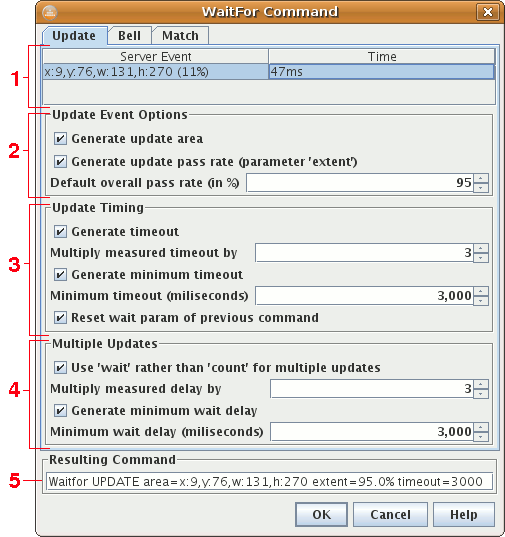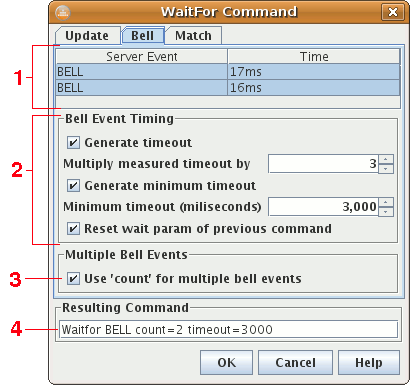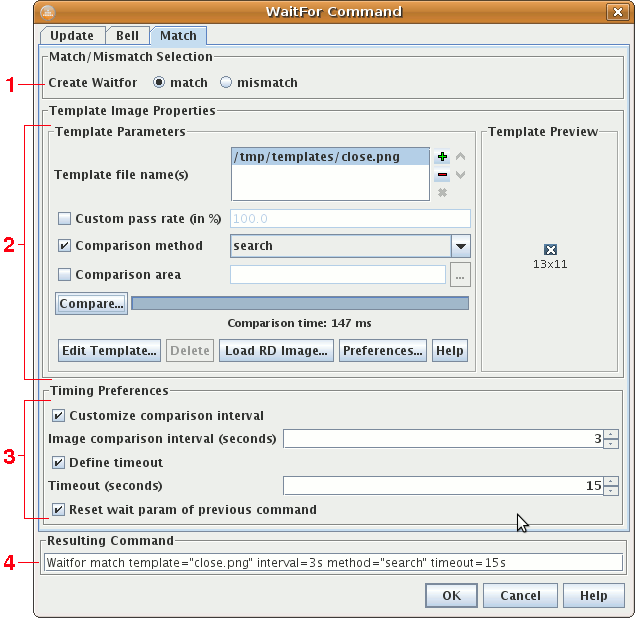
GUI Reference
 |
T-Plan Robot Enterprise
2.3.5 Doc
Collection GUI Reference |
11/07/12 |

x:<x>,y:<y>,w:<width>,h:<height>,
update scope (extent) as a
percentage of the whole desktop and time
elapsed from
the last user action (such as mouse click, drag or key press). Note
that the list displays only update events
which are greater than a certain extent. This limit is by default set
to
10% and can be customized in the Preferences
window. See also help on the Events
Tab
of the Tool Panel which contains a list with similar
functionality.area=x:<x>,y:<y>,w:<width>,h:<height>).
When on it tells the WaitFor command to wait for update of a specific
area of the desktop. The option is by default on.passrate=<value>%) specified in the
Default overall pass rate into the
command. It specifies how much of the specified area (or the whole
desktop if no area is specified) must get updated to consider the
condition met. The option is by default on. See help on Waitfor
update for
more info about pass rates and update area.timeout=<time>). It defines
the maximum amount of time to wait for the specified desktop update.
The time value is calculated as the time elapsed from
the last user action (see the Update Event List above) multiplied by
the coefficient specified below the check box. If the Generate minimum timeout option is
on, its value is used if the calculated timeout is lower.
Waitfor bell
command select one or more events in
the list and click OK. timeout=<time>). It defines
the maximum amount of time to wait for the bell event(s).
The time value is calculated as the time elapsed from
the last user action (see the Bell Event List above) multiplied by
the coefficient specified below the check box. If the Generate minimum timeout option is
on, its value is used if the calculated timeout is lower.
timeout=<time>). It defines the
maximum amount of time to wait for a match of the remote desktop and
selected template image. If you don't select this option, the command
will wait until there's a match (or mismatch respectively).